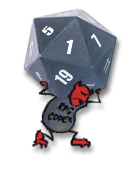We were also puzzled by the high churn rate in Korea (25 percent). Churn was the measure of how many people were quitting the game. North American churn was amazingly low, at only 5 percent. The producers had expected a lower churn in Korea and sent inquiries to those quitting as to why they dropped out of the game. After looking at two years of Korean gaming magazines, it was apparent the Koreans didn’t enjoy playing the “monster races” of the Horde. In Korea, monsters were to be killed, not played, so it was beginning to look like the Korean servers might not be as full as we had anticipated. A not-so-surprising statistic was that three out of four Koreans preferred the PvP servers to non-PvP servers (while the American player base was evenly split). We hoped our PvP battlefields would help boost Korea’s level of interest. Another issue holding WoW back was that the game didn’t allow for Diablo-style point-and-click movement, which was important because it freed up the player’s hand to hold a cigarette. In the end, WoW demanded too much attention for the casual atmosphere of Korean Internet cafés, and we planned to address this problem with the interface. Mark Kern summed up the company’s desire to address the concerns of the lucrative Korean market: “If Koreans want point-and-click movement, we’ll give them point-and-click movement.”














![The Year of Incline [2014] Codex 2014](/forums/smiles/campaign_tags/campaign_incline2014.png)























